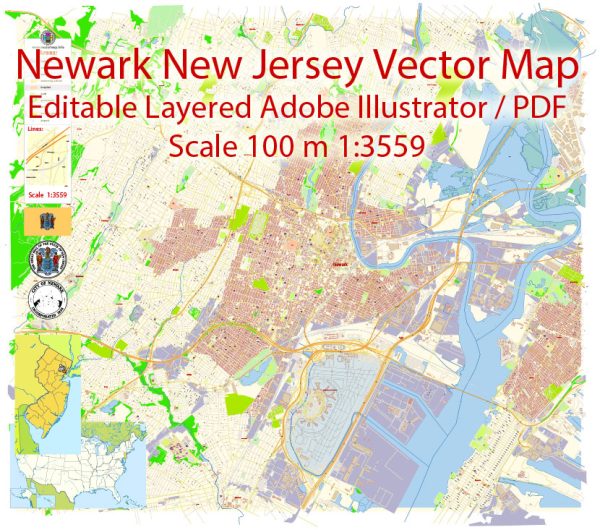Newark, New Jersey, has a rich history of urban development that reflects the broader trends in American cities. The city’s evolution can be traced through various phases, each influenced by economic, social, and political factors.
- Colonial Era and Early Development (17th-18th centuries):
- Newark was founded in 1666 by Puritans from Connecticut, making it one of the oldest cities in the United States.
- Initially, Newark was a small village centered around the intersection of Broad and Market Streets.
- The city’s strategic location along major transportation routes contributed to its early growth.
- Industrialization and Economic Expansion (19th century):
- The 19th century saw Newark transform into an industrial hub. Industries such as leather tanning, breweries, and manufacturing thrived.
- The arrival of the railroad in the mid-19th century further boosted Newark’s economic growth by facilitating transportation and trade.
- The city’s population grew as immigrants, particularly from Europe, arrived to work in its expanding industries.
- The Rise of Newark as a Manufacturing Center (Late 19th to Early 20th centuries):
- Newark became a major manufacturing center, particularly known for its production of leather goods, jewelry, and textiles.
- The city’s industrialization led to increased wealth but also resulted in the development of distinct neighborhoods, often divided along ethnic and racial lines.
- Mid-20th Century Decline and Urban Renewal:
- Like many American cities, Newark faced challenges in the mid-20th century. Deindustrialization, suburbanization, and racial tensions contributed to economic decline and social unrest.
- The 1967 Newark riots had a significant impact on the city, leading to widespread property damage and further exacerbating social and economic issues.
- In response, the city implemented urban renewal projects, aiming to revitalize the downtown area and address social problems.
- Post-Industrial Era and Redevelopment (Late 20th century to Present):
- Newark’s economy shifted towards the service and finance sectors in the late 20th century.
- Investment in cultural institutions, educational facilities, and transportation infrastructure, including Newark International Airport, played a role in the city’s revitalization.
- The construction of major developments, such as the Prudential Center and New Jersey Performing Arts Center, contributed to the city’s cultural and economic resurgence.
- Challenges and Opportunities:
- Newark still faces challenges related to poverty, crime, and educational disparities, but ongoing efforts in economic development, community engagement, and education aim to address these issues.
- The city remains a key transportation hub with its airport, seaport, and major highways, contributing to its importance in the region.
Understanding Newark’s history of urban development involves recognizing its role in industrialization, the challenges it faced in the mid-20th century, and the ongoing efforts to revitalize and shape its future. The city’s narrative is emblematic of the broader patterns observed in American urban history.


 Author: Kirill Shrayber, Ph.D.
Author: Kirill Shrayber, Ph.D.